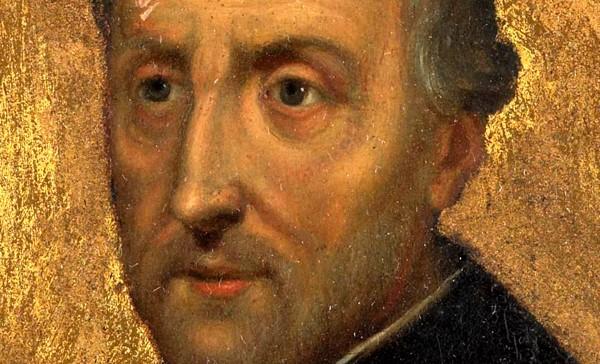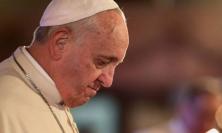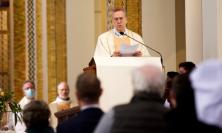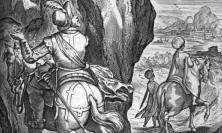The social and religious context in which a young Dutch man, who was born 500 years ago on 8 May 1521, entered the Society of Jesus was not all that different to the one in which we find ourselves today, writes Thomas Flowers SJ, and so Peter Canisius’s story should command our attention. Canisius’s vocation to the Society is as rich a source of surprise and instruction today as it was when he became a Jesuit.
There were just as many good reasons not to become a Jesuit in 1543 as there are today. The insistent recurrence of plague and the constant threat of violence made life in sixteenth century Europe tense and uncertain. Minority groups – most notably then the Jewish people – were persecuted and blamed for problems. The wealthy and powerful remained largely untouched by the plight of the poor. The Catholic Church was riddled with scandals, with corrupt and out-of-touch leaders, and with infighting over doctrine and practice. The situation is familiar enough. But today the Society of Jesus has a nearly 500-year reputation that can serve both to attract and deter potential recruits. When Peter Canisius first learned of the Society’s existence in 1543, it had only been three years since its official foundation, it had relatively few members, and it had established only the most basic features of its institutional structure. Canisius was an intelligent, talented young man for whom any number of promising careers in secular society and the Church lay open. Like so many Jesuits who have followed in his wake, Canisius had every reason not to enter the Society of Jesus. Yet just a few months after learning of the existence of the order, Canisius took perpetual vows as a Jesuit on 8 May 1543, his 22nd birthday. When he died on 21 December 1597, he had been a Jesuit for over 54 years.
Peter Canisius was born in Nijmegen in what is now the Netherlands exactly 500 years ago, on 8 May 1521. The son of the town mayor, he grew up comfortably and was well-educated from an early age – and well-steeped in the Catholic faith. At the age of fifteen, he left his native town to study humane letters at the University of Cologne. He was nineteen and still studying at the university when he made a private vow of celibacy, with the obvious intention of either becoming a priest, entering religious life, or both. Yet despite the company he kept in those years with diocesan clergy and the local community of Carthusians, Canisius remained uncertain as to the precise shape his vocation would take until, in early 1543, he met a young man at the university named Alvaro Alfonso. Alfonso had lived comfortably as the priest-chaplain to the daughters of Emperor Charles V until 1542 when Pierre Favre, one of the original members of the Society of Jesus, came to stay at court. When Favre left, Alfonso left with him and soon entered the Jesuits. Alfonso must have spoken of Favre and the Spiritual Exercises in exuberant and glowing terms, for on the strength of his word, Canisius left Cologne on foot, heading for the city of Mainz where he had been told Favre was staying. When he found Favre, he asked to make the Spiritual Exercises he had heard about from Alfonso, and Favre agreed to lead him through the retreat. Shortly after Canisius completed the roughly thirty-day retreat, he professed vows as a Jesuit.
Stripped of the benefit of hindsight and the rosy hues of pious storytelling, Canisius’s vocation does not make a lot of sense. He was smart and well-aware of the problems in society and in the Church. But at 22, he threw away every promising career opportunity he had in favour of joining a group about which he knew extremely little. His faith ran deep, but surely it would have made more sense for him to become a Carthusian, following the example of the holy community that had become so dear to him in Cologne. At least he knew that community well, unlike the Jesuits. Indeed, the Society as yet had no formal constitutions; the Spiritual Exercises had not been published and so did not exist in definitive form; and, as evidenced by the fact that Canisius took his vows just after making his thirty-day retreat, no rules or structures had yet been established for how to train Jesuits. Today, Jesuit priests have a two-year preparation for vows, followed by roughly nine more years of training before ordination and another five or more years before final vows. So it would likely horrify many Jesuit superiors today to realise that Canisius took his first, perpetual vows after no more training than the Exercises themselves, was ordained a priest three years later, and took his final vows in 1549, just six years after meeting his first Jesuit. And by that time, he had already stood against a heretical archbishop, had been forced by the city of Cologne to vacate the Jesuit residence because they did not recognise the right of the Society to form a new religious community, and had served as a theologian at the less-than-edifying first session of the Council of Trent.
What Canisius did not already know about all that was broken in the Catholic Church, his Jesuit vocation taught him. Being a Jesuit involved Canisius in ecclesiastical intrigue, bitter exchanges with Protestants, and constant politicking with rulers whose support he needed. All the while, he lamented the ignorance of the faith that persisted among ordinary Catholics and always longed to be of service to prisoners, the sick and children – even while his vocation demanded of him long hours at his desk, preaching at royal courts, property negotiations and, as an eventual Jesuit superior himself, the settling of endless disputes among fellow Jesuits. Studied from a certain perspective, Canisius’s life reads like a resume of what young men considering a religious vocation today fear might be their fate: Canisius was constantly isolated, tarnished by the Church’s sins, and kept from doing the good he most wanted to do.
Yet in the last year of his life, when Canisius looked back over his heartaches and successes, his Jesuit vocation shone out as that for which he was most grateful. Shortly before he died, a very infirm Canisius dictated his Spiritual Testament to a fellow Jesuit. With this text, Canisius summarised the spiritual legacy he hoped to leave behind him, while giving thanks to God for the many blessings of his life. His description of his vocation to the Jesuits is as moving as it is unexpected. Canisius who, it will be recalled, had taken a vow of celibacy and thus set himself along a very particular spiritual path three years before he met Pierre Favre, compared that meeting to the biblical encounter of Matthew with Jesus.[1] Canisius recounts that, ‘since, sitting at the customs booth, I was hearing the not obscure voice of God, I had no desire to resist the call [. . . ] but with Matthew I arose, and I turned away from this unclean world, breaking those chains in which I was not a little entangled.’[2] Looking back, Canisius believed that it was only when he met Favre, made the Spiritual Exercises, and entered the Jesuits that he broke free from the chains of the world that had held him bound. It is an extraordinary claim, considering both the unimpeachably pious life he had lived before he was a Jesuit, and the heavy burdens being a Jesuit placed upon his shoulders. Yet for Canisius, his vocation was the definitive source of his freedom to love and serve God. Canisius is clear that, ‘I never afterwards sorrowed of this profession, however many have afflicted or insulted me.’[3] Indeed, he goes so far as say that, ‘I feel sorry for those who shudder at Religious discipline as if it were filled with difficulties and an intolerable yoke.’[4] His life may have been filled with difficulties, but his Jesuit vocation itself was no burden to him.
That leaves us with the lingering question of why. He was already pursuing a life of faith before he met the Jesuits, yet he saw his Jesuit vocation as the source of his spiritual freedom. He faced troubles because he was a Jesuit that he would not have faced otherwise, yet he scoffed at considering his Jesuit vows a heavy yoke to bear. The answer to this mystery seems to lie in what he learned about God and himself when he made the Spiritual Exercises under the direction of Pierre Favre in spring 1543. This was the moment that changed everything for him, the one he looked back on when he compared himself to Matthew sitting at the customs booth. And we are quite fortunate when it comes to those Exercises Canisius made, because unlike the Exercises of most who have made them in the past 500 years, Canisius’s have left a record. Pierre Favre kept a spiritual diary in the days when he gave Canisius the Exercises, and though it was obviously intended as a private document, since it came to light after his death it has been shared and treasured among Jesuits, and it was eventually published.[5] Between the lines of Favre’s musings on the Exercises as he gave them to Canisius, much is revealed of what happened to Canisius in those seminal days.
Favre writes that ‘during a visit to Master Peter [. . .] who at the time was going through the Exercises, I understood more clearly than ever’ some things about ‘the discernment of spirits.’[6] There are people, Favre explains, ‘particularly those who are pious, long-practiced in devotion, and free from sin’ in whom the evil spirit ‘is not recognized because they have no thoughts which stray beyond the bounds of truth and goodness.’ Clearly, he here describes the situation of Canisius himself. People like Canisius do not see the good they are capable of because they are good; they do not recognise that the evil spirit is limiting their potential because it acts in them so subtly. So, Favre explains, it is important to lead people like this to consider not just their life as it is, but a ‘more perfect state of life’ so that they ‘will easily detect both spirits: the spirit which strengthens and the spirit which weakens, the spirit which enlightens and the spirit which darkens and defiles – I mean the good spirit and the one which opposes it.’ In other words, Favre invited Canisius to imagine himself living to his fullest potential and then, in the light of this image, to look at his life and recognise how the evil spirit was limiting him and what good God was inspiring. Considered in this way, Canisius saw his life clearly and knew what entrapped him and what freed him. And so in freedom he left the life he had been living behind and entered the Society of Jesus.
Not everyone who makes the Spiritual Exercises is called to a religious vocation. But what the Exercises did for Canisius was to help him to see his life clearly. They changed the question he posed from one concerned with successes, failures and career, to one of interior freedom, service and love. Posed that way, Canisius looked at the man who gave him the Exercises, Pierre Favre, and realised that he wanted nothing more for his life than what Favre exemplified. He wanted to serve God and God’s people the way that Favre served. He wanted to be free like Favre was free. No doubt, he could still think of many good reasons not to be a Jesuit; but the only reason that mattered was the freedom that would allow him to follow wherever Christ led.
Thomas Flowers SJ is a member of the USA West Jesuit Province and is studying for a PhD in Jesuit History at the University of York.
If you would like to explore a vocation to the Society of Jesus, please visit jesuit.org.uk/vocations, or contact the Jesuits in Britain’s Vocations Promoter, Fr James Conway SJ at [email protected]
[1] Matthew 9:9-13.
[2] Julius Oswald & Rita Haub (eds.), Das Testament des Petrus Canisius. Vermächtnis und Auftrag (Frankfurt am Mein: Gruppe für Ignatianische Spiritualität, 1997), p.37. The English translation (from the Latin) is my own.
[3] Das Testament des Petrus Canisius, p.38.
[4] Das Testament des Petrus Canisius, p.39.
[5]Pierre Favre, The Spiritual Writings of Pierre Favre, eds. Edmond C. Murphy & John W. Padberg (Saint Louis: Institute of Jesuit Sources, 1996), pp. 57-315.
[6] All of the quotations that follow are taken from The Spiritual Writings of Pierre Favre, pp.240-242.
Could a Jesuit vocation be the source of your spiritual freedom?






